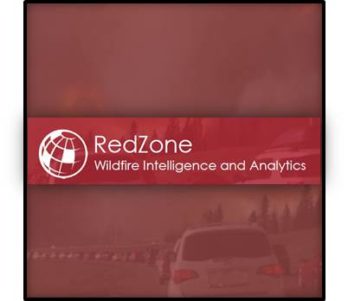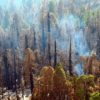Wildfires have increased in intensity and impact to both humans and infrastructure in the last couple decades. If you live in a forest or wildland area, you face the real danger of wildfire. To reduce the increasing risk, homeowners need to take more responsibility in preventative measures. RedZone suggests considering the fire resistance of your home, the topography of your property, and the nature of the vegetation close by. Here are nine questions for homeowners in wildfire urban interface areas that they should strive to be able to answer:

Take some time to learn about the wildfire history of your area. Be aware of recent weather. History tells us that a long period without rain increases the risk of wildfire. Just because you do not live in the forest does not mean you are not at risk from embers and smoke.

All vegetation is combustible; the best strategy for reducing risk is to simply reduce the trees and other vegetation near your home. The rule of thumb is, the greater the distance between your home and the vegetation, the greater the protection. Typically, two zones make up the required 100 feet of defensible space. The zones are: 0-30 feet & 30-100 feet, each warranting both vertical and horizontal vegetation clearance. Further guidelines are outlined here.

Non-vegetation combustible materials are also part of the 0-30 foot zone. Combustible materials such as door mats, patio furniture, storage, etc can ignite homes just as often as vegetation.

Any porch, balcony or overhang with exposed space underneath is fuel for an approaching fire. Overhangs ignite easily by flying embers and by the heat and fire that gets trapped underneath.

Like porches and balconies, eaves trap the heat rising along the exterior siding. Enclose all eaves to reduce the hazard.

Any attic vent, soffit vent, louver or other opening can allow embers and flaming debris to enter a home and ignite it.

The roof is especially vulnerable in a wildfire. Embers and flaming debris can travel great distances, land on your roof and start a new fire. It’s almost important to keep roof, gutters of leaves and debris.

Fire resistant materials such as stucco, metal, brick, cement shingles, concrete and rock in the siding of a home can help prevent home ignition. You can treat wood siding with UL-approved fire retardant chemicals, but the treatment and protection are not permanent.

Windows allow radiated heat to pass through and ignite combustible materials inside. The larger the pane of glass, the more vulnerable it is to fire. Dual- or triple-pane thermal glass, and fire resistant shutters or drapes, help reduce the wildfire risk.
Sources:
https://www.fema.gov/pdf/hazard/wildfire/wdfrdam.pdf





2 Comments